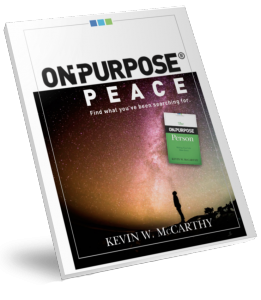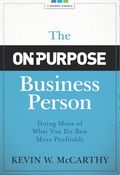Why does your business exist? Pause and answer.

Over the decades, I’ve posed this question to business leaders and audiences. Here’s the four most popular and consolidated responses of my unvalidated survey:
- 50% to make money or to profit the shareholders
- 20% to sell goods or services to customers
- 20% to provide jobs
- 10% to raise the standard of living in society
So what did you answer?
The first three accurately describe what businesses do (missions), but not the reason why businesses exist (purpose). Confusing missions as purpose creates an “it’s all about me first” approach to leading a business. Such a self-centered orientation distorts the business and ironically diminishes performance.
Unfortunately, this is the prevailing principle at work within the CEO-system of business administration. Most business owners are unwittingly placing mission ahead of purpose from ignorance, not malice. Regardless, the adverse effects remain the same.
Purpose provides a point of origin to meaningfully resolve, satisfactorily align, and fluidly blend otherwise competing interests in service to God, self, and others. Purpose (being) informs vision (seeing) and is expressed through its missions (doing) while guided by its values (choosing).
Businesses hold the special opportunity to profit (add value) to the world’s people. Business is first a social construct whose greatest potential to earn, sell, and hire ultimately relies upon improving the lives or standard of living of people — shareholders, team members, customers, vendors, and more. This common good mindset is akin to answering the question, “How does our business make a difference or the world a better place?”
If your business doesn’t have a 2-word purpose, you’ll find in Chief Leadership Officer the suggestion to use “We exist to serve by Increasing Wealth.” One caveat for using wealth (state of weal or well-being) is to embrace the whole person perspective (body, mind, spirit, and financial) plus working and living conditions — one’s standard of living.
My bet is you don’t have a purpose statement. Rather you have a vision or missions and you’ve haven’t a clue what its costing your company in lost financial profit.
Business has a high and noble role to play in society. We are to profit the world–to make the world a better place. I dare you to re-consider how your business purpose is stated, communicated, and integrated throughout your company.
Let your business reformation begin!
Be On-Purpose!
Kevin
PS: Need some help sorting out purpose, vision, missions, and values. Schedule a time to Pick Kevin’s Brain.




 This online app will guide you through a process of selecting a purpose statement, plus you’ll receive a 10-email course that’s practical to being on-purpose.
This online app will guide you through a process of selecting a purpose statement, plus you’ll receive a 10-email course that’s practical to being on-purpose.

